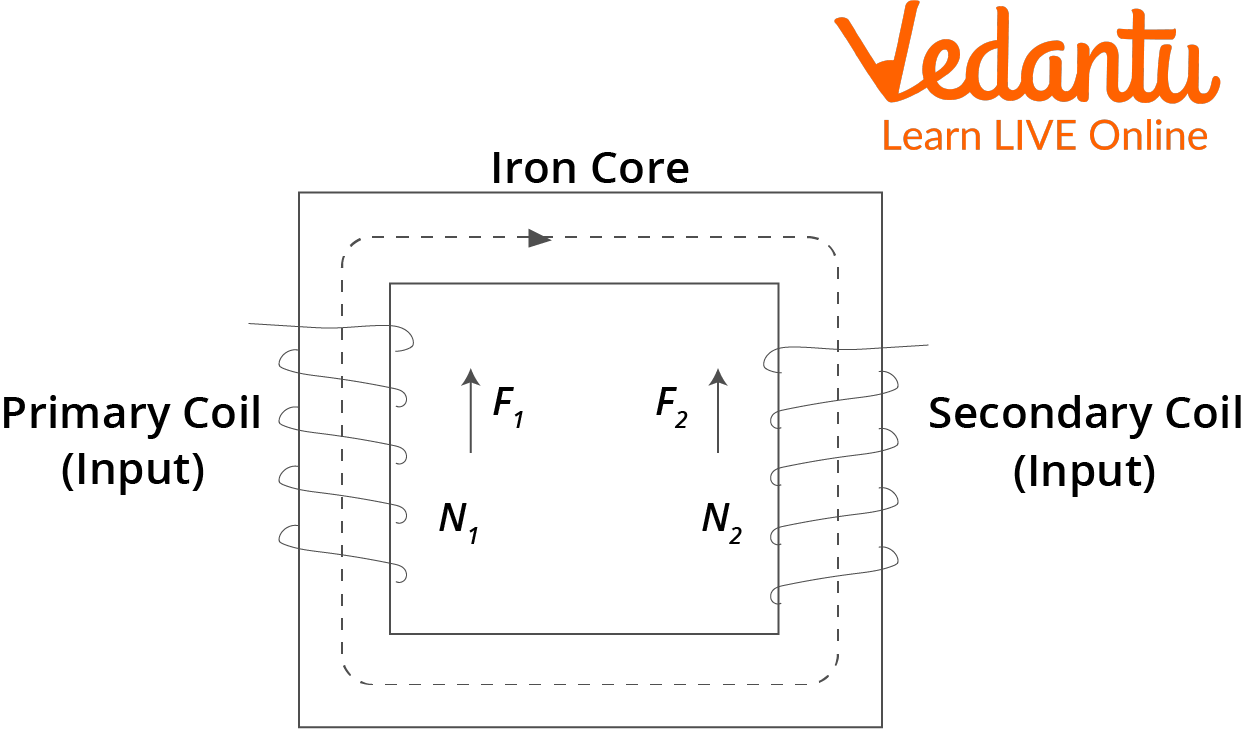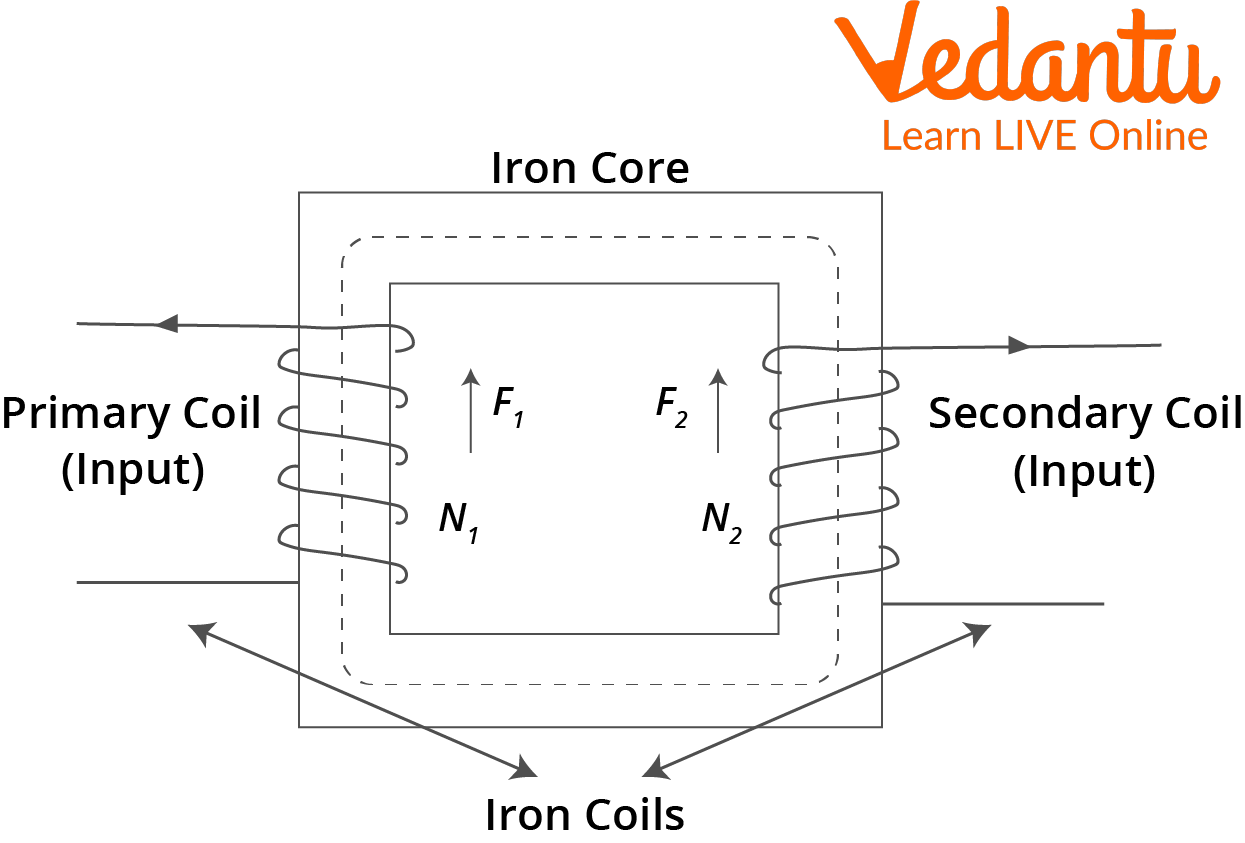




How Do Transformers Work? Core Concepts and Applications Explained
The transformer in electricity is a device that steps up or down voltage. The output voltage goes up in a step-up transformer while it goes down in a step-down transformer. The step-up transformer will increase the output current, and the step-down transformer will decrease the output current to keep the input and output power of the system equal.
The transformer mainly controls voltage to distribute and send alternating current power. In 1831, Michael Faraday was the first to talk about a transformer, which many other well-known scientists then took up. The main transformers were used to balance electricity made at very high voltages and electricity used at very low voltages.
What is a Transformer?

Transformer
A transformer is a device that moves electricity from one circuit to another without changing the frequency. It does this through electromagnetic induction. Transformers are an essential part of systems that use electricity.
Transformers come in a wide range of sizes, from the tiny coupling transformer in a stage microphone to the big transformers in power grids carrying hundreds of MVA. The main reason to use a transformer is to change electricity from one voltage level to another.
High voltage is easier to send over long distances, but lower voltage is easier and safer to use in the office or home. Alternating current (AC) voltage can be increased or decreased with the help of a transformer.
Most transformers have two coils wrapped around the same core. The primary coil, also known as the "input coil," is connected to the supply side, and the secondary coil is connected to the load. The output coil is the second one.
Electromagnetism is the way that energy moves from the primary to the secondary. Many transformers are used in power grids. These networks move electricity from where it is made to where it is used.
Transformer Principle
The transformer operates according to the principles of electromagnetic induction and mutual induction, as stated by Faraday.
There are often two coils on the transformer core: the primary and secondary coils. The mutual inductance of the two coils is very high. When an alternating current flows through the primary coil, a changing magnetic flux is created.
Faraday's law of electromagnetic induction says that this change in magnetic flux causes an emf (electromotive force) in the secondary coil, which is connected to the core with a primary coil. It's called mutual induction, and this is how power transformers work.
In general, a transformer does the following:
Getting electricity from one circuit to another
Induction of electricity through electromagnetic fields
Transferring electricity without changing the frequency
Mutual induction connects two circuits.
Uses of Transformer

The use of a transformer
Transformers transfer current without physical touch or changing frequency. Depending on the type, there are different ways to use a transformer. The use of the transformer is as follows:
A transformer-regulated current flow fuels chemical engineerings processes like electrolysis and electroplating. Reaction regulates the current flow.
Melting and welding demand high currents, whereas cooling requires lower currents. Transformers manage the current throughout these procedures.
Transformers charge batteries. Only a transformer can manage voltage correctly to avoid damaging battery components.
Transformers in circuit breakers help start and stop current flow using a switch, protecting against high-voltage damage.
Transformers control alternating currents, which increases efficiency and lowers energy expenditures.
Transformer Facts
In 1880, the idea of making electrical transformers came up.
Many countries increase the voltage to 500,000 volts (500KV) to send electricity thousands of kilometres away.
You can't use direct current in a transformer because direct current doesn't produce a changing magnetic field.
Conclusion
Simply put, a transformer is a device that either increases or decreases voltage. This is what we have discussed. Moreover, one kind of transformer, a step-up, raises the output voltage while another, a step-down, lowers it. To maintain a constant output power from a given input power, a step-up transformer may reduce the output current, and a step-down transformer can raise it.
FAQs on Key Facts About Transformers Every Student Should Know
1. What is a transformer and on what principle does it work?
A transformer is a static electrical device that transfers electrical energy from one circuit to another through the process of electromagnetic induction, without changing the frequency. It works on the principle of mutual induction. When an alternating current (AC) flows through the primary coil, it creates a changing magnetic flux in the core, which then induces an electromotive force (EMF) in the secondary coil.
2. What is the main difference between a step-up and a step-down transformer?
The main difference lies in their function and construction related to the number of coil turns.
- A step-up transformer increases the voltage from the primary to the secondary coil. It has more turns in the secondary coil than in the primary coil (Ns > Np) and is used at power plants for long-distance transmission.
- A step-down transformer decreases the voltage. It has fewer turns in the secondary coil than in the primary coil (Np > Ns) and is used in residential areas and consumer electronics to lower the voltage to a safe level.
3. Why do transformers only work with Alternating Current (AC) and not Direct Current (DC)?
Transformers operate on the principle of mutual induction, which requires a changing magnetic flux to induce a voltage in the secondary coil. Alternating Current (AC) naturally has a continuously changing magnitude and direction, producing the necessary changing flux. Direct Current (DC) has a constant magnitude and does not create a changing flux. Therefore, no induction occurs, and a transformer will not function with a DC supply.
4. What are the common causes of energy loss in a real transformer?
Even highly efficient transformers lose some energy. The main causes of loss include:
- Copper Loss: Heat produced in the copper windings due to the resistance of the wire (I²R loss). It is minimised by using thick wires.
- Iron Loss: This includes Hysteresis Loss from the repeated magnetisation and demagnetisation of the core, and Eddy Current Loss from circulating currents induced in the core. It is minimised by using a laminated soft iron core.
- Flux Leakage: When not all the magnetic flux from the primary coil links with the secondary coil.
5. What is the role of a transformer in long-distance power transmission?
Transformers are crucial for efficient long-distance power transmission. At the power station, a step-up transformer increases the voltage to a very high level, which significantly reduces the current (since Power = Voltage × Current). According to the formula for power loss (P = I²R), this lower current drastically minimises energy lost as heat in the transmission lines. Before the power reaches consumers, a step-down transformer is used to lower the voltage back to a safe and usable level.
6. How is the construction of a transformer designed to maximise its efficiency?
The construction of a transformer incorporates several features to minimise energy losses. The core is made of a soft magnetic material like silicon steel to reduce hysteresis loss. This core is also laminated, meaning it is made of thin, insulated sheets stacked together, which breaks the path of eddy currents and reduces energy loss. Furthermore, the primary and secondary coils are often wound on top of each other to maximise flux linkage and prevent leakage.
7. Can a transformer have an efficiency of 100%? Explain why or why not.
No, a transformer cannot have an efficiency of 100% in practice. An 'ideal transformer' with 100% efficiency is a theoretical concept used for calculations. Real transformers always have some energy losses, primarily as heat, due to factors like copper loss in the windings and iron losses (hysteresis and eddy currents) in the core. While these losses can be minimised to make transformers highly efficient (often above 95%), they can never be completely eliminated, meaning the output power will always be less than the input power.









